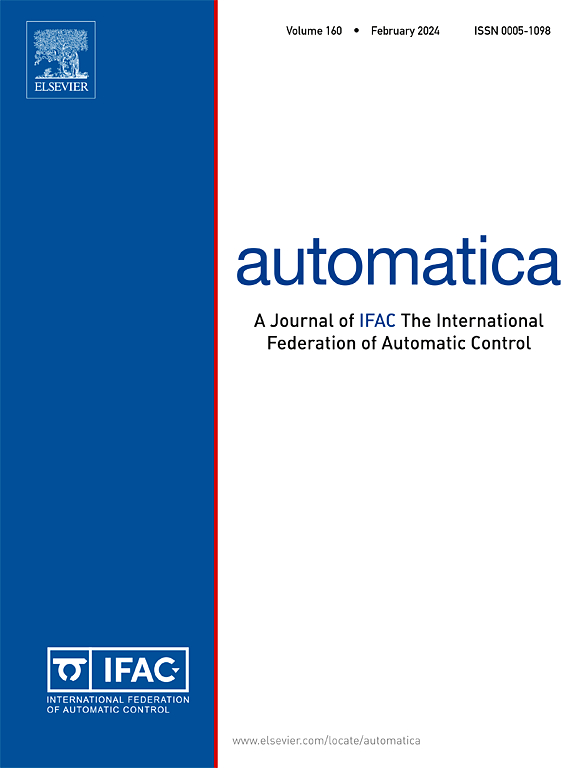Finite and fixed-time feedback-based continuous-time optimization
IF 5.9
2区 计算机科学
Q1 AUTOMATION & CONTROL SYSTEMS
引用次数: 0
Abstract
This article presents a framework for finite and fixed-time control, using feedback-based optimization to drive a system toward its optimal operating point. Unlike traditional methods that rely on predefined set points, this approach employs endogenous control inputs derived through numerical optimization while adhering to system constraints. The controller’s dynamics are modeled as a convergent gradient flow, allowing the system to autonomously achieve its optimum without external references. The proposed control architecture guarantees finite- and fixed-time stability, with a Lyapunov-based analysis determining permissible perturbation bounds to ensure robust performance. The effectiveness of the proposed control strategy is demonstrated through simulations on a coupled-tank and a buck converter systems, successfully achieving the desired steady-state operation with the designed control approach.
基于有限固定时间反馈的连续时间优化
本文提出了一个有限和固定时间控制的框架,利用基于反馈的优化驱动系统向其最佳工作点运行。与依赖于预定义设定点的传统方法不同,该方法采用通过数值优化获得的内生控制输入,同时遵守系统约束。控制器的动力学建模为收敛梯度流,允许系统在没有外部参考的情况下自主达到最优。所提出的控制体系结构保证了有限和固定时间的稳定性,基于李雅普诺夫的分析确定了允许的扰动界限,以确保鲁棒性能。通过对耦合油箱和降压变换器系统的仿真验证了所提出控制策略的有效性,所设计的控制方法成功地实现了所期望的稳态运行。
本文章由计算机程序翻译,如有差异,请以英文原文为准。
求助全文
约1分钟内获得全文
求助全文
来源期刊

Automatica
工程技术-工程:电子与电气
CiteScore
10.70
自引率
7.80%
发文量
617
审稿时长
5 months
期刊介绍:
Automatica is a leading archival publication in the field of systems and control. The field encompasses today a broad set of areas and topics, and is thriving not only within itself but also in terms of its impact on other fields, such as communications, computers, biology, energy and economics. Since its inception in 1963, Automatica has kept abreast with the evolution of the field over the years, and has emerged as a leading publication driving the trends in the field.
After being founded in 1963, Automatica became a journal of the International Federation of Automatic Control (IFAC) in 1969. It features a characteristic blend of theoretical and applied papers of archival, lasting value, reporting cutting edge research results by authors across the globe. It features articles in distinct categories, including regular, brief and survey papers, technical communiqués, correspondence items, as well as reviews on published books of interest to the readership. It occasionally publishes special issues on emerging new topics or established mature topics of interest to a broad audience.
Automatica solicits original high-quality contributions in all the categories listed above, and in all areas of systems and control interpreted in a broad sense and evolving constantly. They may be submitted directly to a subject editor or to the Editor-in-Chief if not sure about the subject area. Editorial procedures in place assure careful, fair, and prompt handling of all submitted articles. Accepted papers appear in the journal in the shortest time feasible given production time constraints.
 求助内容:
求助内容: 应助结果提醒方式:
应助结果提醒方式:


